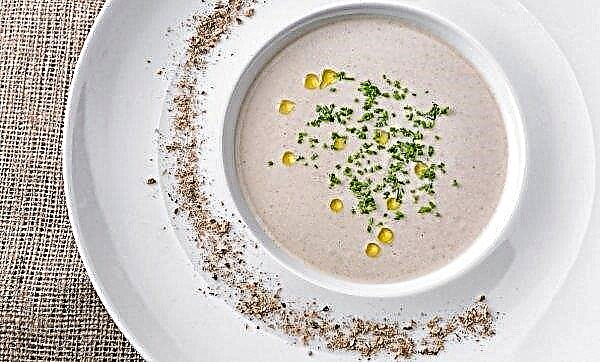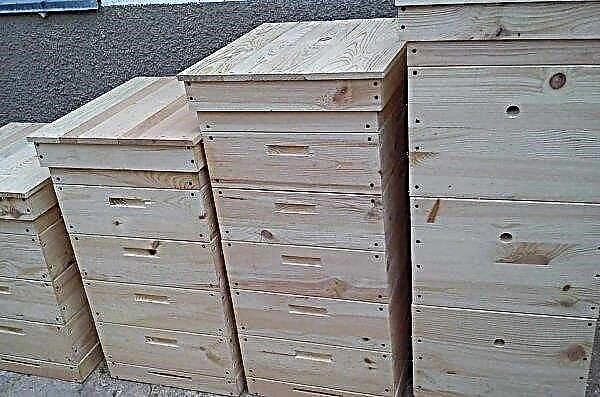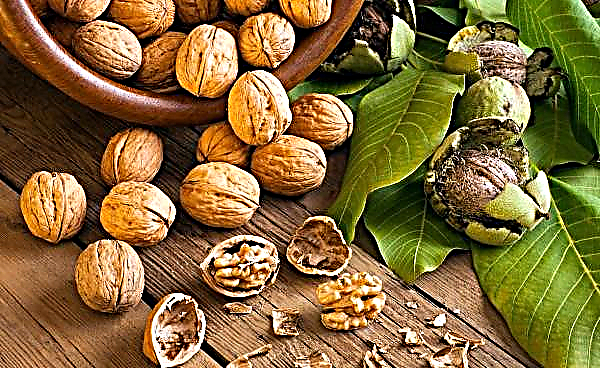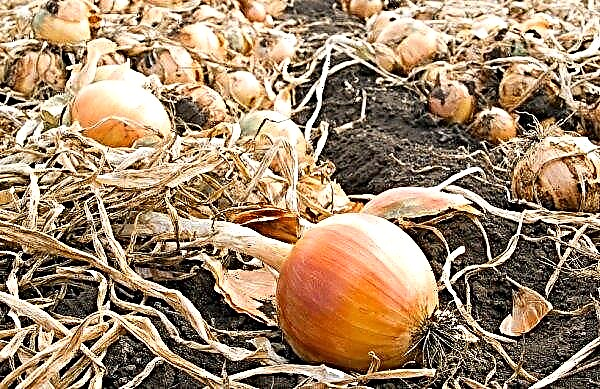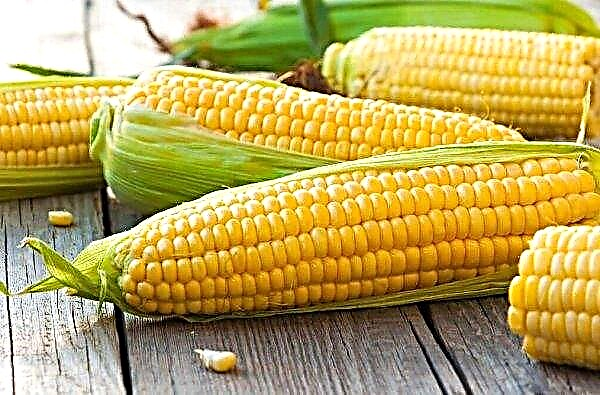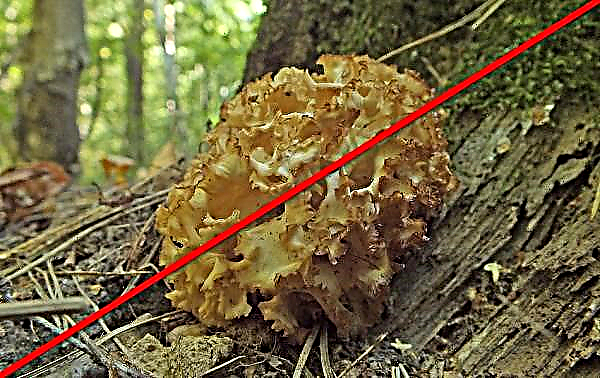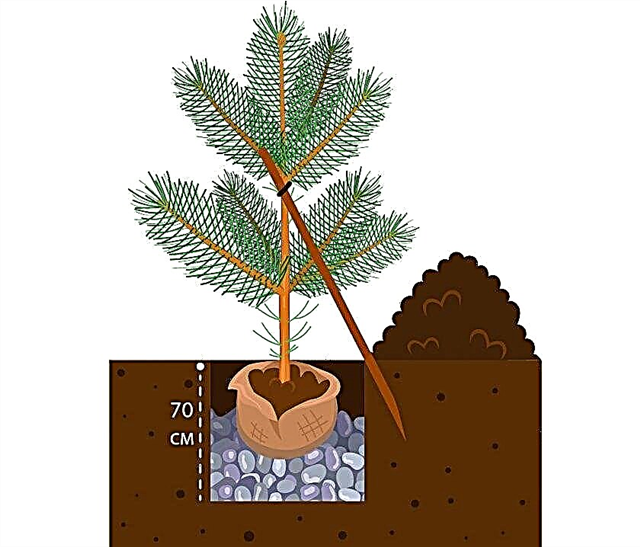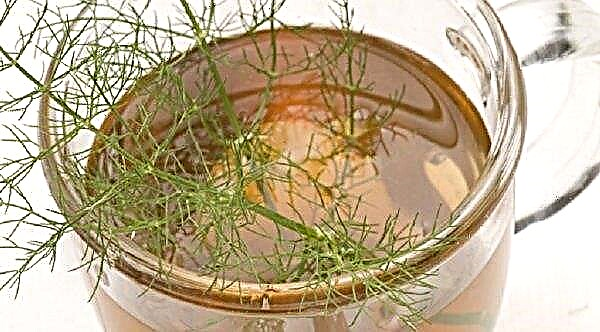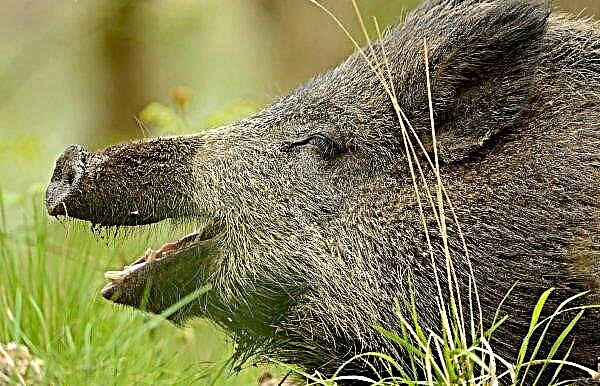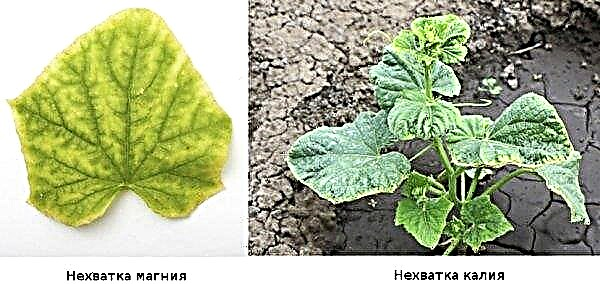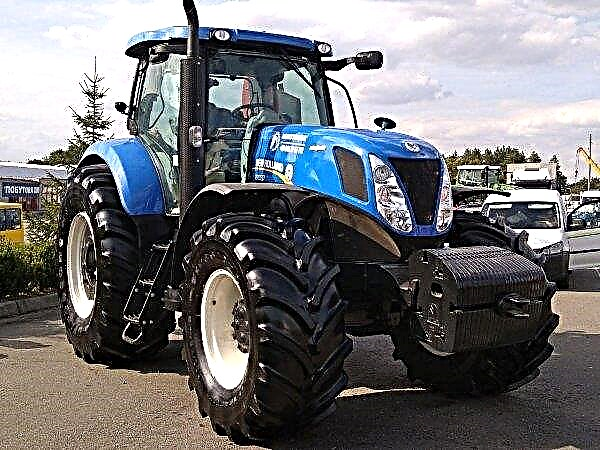One of the worthy varieties of blackcurrant is the variety Dobrynya. The culture has many advantages, but there are also many nuances of cultivation. Below is a description of the plants and the recommended agricultural cultivation technique.
Grade description
Blackcurrant Dobrynya is a large-fruited variety characterized by high taste qualities of fruits. Plants are resistant to temperature changes, in particular, to frosts down to –25 ° C and droughts. The variety is popular with gardeners and collects many positive reviews.
Did you know? Currants grow on almost all continents. Exceptions are Antarctica and Australia.
Selection history
The blackcurrant variety Dobrynya was bred at the All-Russian Research Institute of Lupine. The main breeder of the variety is A.I. Astakhov.  During the development of the variety, the varieties of Raisins and No. 42-7 were crossed. The Dobrynya currant was included in the State Register of National Achievements of Selection in 2004.
During the development of the variety, the varieties of Raisins and No. 42-7 were crossed. The Dobrynya currant was included in the State Register of National Achievements of Selection in 2004.
Appearance, characteristics of berries, ripening time, yield
Currant Dobrynya has the appearance of a compact bush with upright shoots. The branches are of medium thickness, slightly pubescent, slightly shiny. Large green leaves are located on the stems. During flowering, buds with light yellow petals open.
 The berries ripen weighing 5.5–6.5 g. The fruits are oval in shape. The peel is black, strong, shiny. The pulp is dense, taste sweet and sour with a fragrant finish.
The berries ripen weighing 5.5–6.5 g. The fruits are oval in shape. The peel is black, strong, shiny. The pulp is dense, taste sweet and sour with a fragrant finish.
In the chemical composition of berries:
- Vitamin C - 200 mg per 100 g;
- acidity - 2.5%;
- sugar - 6.9%.
The ripening time of the variety is medium. Gardeners in the growing season remove 1.6–2.4 kg of the crop from the bush.
Did you know? In green currant, ascorbic acid is 4 times more than in ripened.
Advantages and disadvantages
- The variety of currant Dobrynya has many advantages:
- compact bush;
- large fruits;
- high taste qualities of the crop;
- stable fruiting;
- universal application;
- frost resistance up to –25 ° С;
- resistance to drought;
- powdery mildew resistance.
- The disadvantages of the farmers called the following characteristics of the culture:
- average yield;
- low or medium resistance to most diseases and pests;
- prolonged rooting of seedlings after planting;
- the need for anti-aging pruning.

Agricultural technology
Planting of crops is carried out in March or at the end of October. After planting, it is necessary to properly care for the seedling - the subsequent fruiting of the bushes depends on the proper farming technique.
Important! Keep a distance of 1.5 m between bushes. Keep a distance of 2–2.5 m between rows.
Seat selection and landing
For planting currants, choose a site open for sunlight. The area should be fenced so that the bushes are not affected by sharp winds. Humidity is recommended moderate.
Plant seedlings as follows:
- Dig a landing hole with a diameter of 0.6 m and a depth of 0.4 m.
- Pour a mixture of 5 kg of compost and 150 g of ash into a hole.
- Place the seedling in a pit at an angle of 45 ° and spread the root system.
- Fill the hole in the hole with soil.
 After planting, a bucket of water is poured under the bush. After watering, mulch from sawdust or hay is spread on the trunk circle.
After planting, a bucket of water is poured under the bush. After watering, mulch from sawdust or hay is spread on the trunk circle.
Care
Important measures in the care of plants - watering and fertilizing. Without them, it is impossible to achieve stable bush growth and fruiting. Watering is carried out 1 time in 2-3 weeks. 2 buckets of water are poured under the bush.
For irrigation around the circumference of the trunk circle, a groove up to 10 cm deep is made. Thus, the root system will absorb water, however, the probability of damage to the trunk by the fungus due to contact with moisture will be lower. Three times during the growing season, the bush is watered with 4 buckets of water.
Abundant watering is carried out:
- at the time of fruit setting;
- during the period of active fruiting;
- after the end of the growing season before shelter for the winter.

Top dressing during the growing season is carried out according to the following scheme:
| At the beginning of the growing season | Root dressing 50 g of urea |
| Before budding | Liquid bird droppings |
| During flowering | Liquid bird droppings |
| Before fruit setting | Spraying with a solution of 2 g of boric acid, 5 g of potassium permanganate and 10 g of copper sulfate in 10 l of water (2.5 l of substance per bush) |
| At the time of fruit setting | Liquid bird droppings |
Pest and Disease Control
Variety Dobrynya is resistant to powdery mildew. To other fungal diseases, resistance is moderate.
The plant can be affected:
Farmers use fungicides to treat fungal diseases. Bordeaux liquid in a concentration of 1% is considered an effective drug for these diseases.
Pests can also affect shrubs. The most common currant parasites agronomists call:
To eliminate these pests, it is recommended to use systemic insecticides. Effective drugs are considered to be Actellik and Aktara.
Trimming and shaping a bush
Pruning of bushes is carried out in early spring before the start of the growing season.
As part of the formation of the bush, the branches are completely cut out:
- over 5 years old;
- broken
- frozen
- affected by disease;
- thickening the crown;
- root shoot.
Young shoots annually at the same time are shortened by 15 cm to stimulate the growth of lateral branches.
 Fig. 1. Currant pruning: a - annual seedling; b - a biennial bush; c, d - shortening of shoots. Fig. 2. Currant bush before anti-aging pruning (a), after it (b) and pruning of a neglected bush (c).
Fig. 1. Currant pruning: a - annual seedling; b - a biennial bush; c, d - shortening of shoots. Fig. 2. Currant bush before anti-aging pruning (a), after it (b) and pruning of a neglected bush (c).
Wintering
The variety is resistant to temperatures up to –25 ° С. In regions where the marks on the thermometers in winter do not fall below the indicated, the bush can not be covered. Before winter, the plant is watered with 40 liters of water, and 2-3 kg of compost is mulched in the trunk circle. In regions with cold winters, Dobrynya currants are additionally wrapped with spanbond.
Harvesting and storage
Harvested when the berries become saturated black. Transportability and shelf life of fruits is above average. Currants are stored in the refrigerator for up to 1 month. When frozen, the fruits are suitable for use for 12 months.
Important! Plaited berries must be discarded. Such fruits are often affected by a fungal infection and can infect a healthy crop.
Currant Dobrynya has many advantages and unpretentious care. Before planting, you should study the rules of planting and caring for the plant. Preparing for cultivation, even an amateur gardener will be able to get a good harvest.
Network user reviews
Dobrynya is one of the best varieties of A.I. Astakhov. In my growing conditions, I rate it higher than Astakhov's varieties such as: Raisins, Selechenskaya-2, and even Navlya and Dar Smolyaninova. If we determined the rating of varieties of currants, as was done according to grape varieties, then these varieties of Astakhov would certainly be included in the top ten in their ripeness groups.

